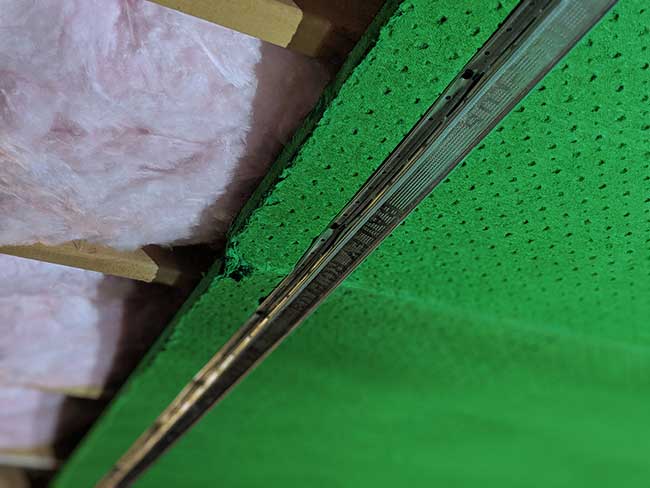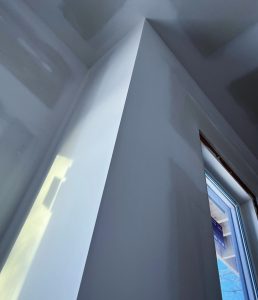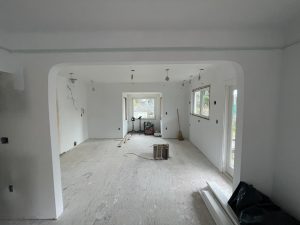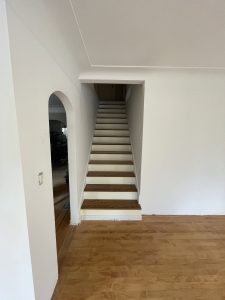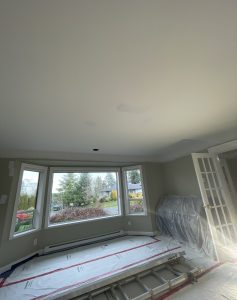Soundproofing is an intricate science that involves understanding how sound waves travel and how they can be absorbed, blocked, or diffused to minimize noise transmission. When it comes to soundproofing drywall, several scientific principles come into play. This guide will delve deeper into these principles and explore how they can be applied to effectively soundproof drywall.
1. Sound Waves and Their Behavior
Sound travels in waves, and these waves can be categorized into two main types relevant to soundproofing:
- Airborne Sound Waves: These are sounds that travel through the air, like voices, music, or television noise. Airborne sound waves impact walls, causing them to vibrate, which then transmits the sound through to the other side.
- Structure-borne Sound Waves: These are sounds that travel through building materials, like footsteps on a floor or a door slamming. These waves are created by direct contact with a structure, causing vibrations that propagate through the material.
Understanding these types of sound waves is crucial because different strategies are required to mitigate each type. Effective soundproofing solutions often address both airborne and structure-borne sound waves.
2. Mass and Density
One of the fundamental principles of soundproofing is increasing the mass and density of the walls. Heavier and denser materials are more effective at blocking sound because they are harder for sound waves to penetrate. Standard drywall has some soundproofing properties, but using specially designed soundproof drywall, which is denser and often contains additional sound-dampening materials, enhances this effect.
The concept here is simple: the more mass a barrier has, the less sound can get through it. Soundproof drywall, often referred to as “quiet rock” or “soundboard,” is designed with increased density. It may include layers of gypsum, viscoelastic polymers, and other materials that add mass and help dampen sound vibrations.
3. Damping
Damping involves reducing the amplitude of sound waves, essentially absorbing and dissipating their energy. This can be achieved using materials that convert sound energy into a small amount of heat through friction. Specialized soundproofing compounds like Green Glue can be applied between layers of drywall to improve damping.
Green Glue is a popular damping compound that remains flexible, which helps it absorb vibrations. When sandwiched between layers of drywall, it helps to dissipate sound energy as it passes through, reducing the amount of sound that can continue traveling.
4. Decoupling
Decoupling is a method used to prevent sound waves from traveling through continuous solid structures. By creating a break or buffer in the path of the sound waves, decoupling minimizes the transmission of sound. In drywall construction, this can be achieved using resilient channels or double-stud walls. These methods create a physical separation between the drywall and the framing, reducing sound transmission.
Resilient channels are metal strips that are mounted perpendicular to the studs. Drywall is then attached to these channels, creating a gap that interrupts the direct path of sound vibrations. Similarly, a double-stud wall consists of two separate sets of studs with a gap between them, further reducing sound transmission by preventing vibrations from passing straight through.
5. Absorption
Sound absorption involves using materials that trap and absorb sound waves, preventing them from bouncing around a room and creating echo or reverberation. While this is more about improving the acoustics within a room, it also contributes to overall soundproofing. Acoustic panels, insulation, and specialized sound-absorbing drywall can all help absorb sound.
Common sound-absorbing materials include fiberglass insulation, mineral wool, and acoustic foam. These materials are typically used within wall cavities or on surfaces to absorb sound waves, thereby reducing the amount of noise that can pass through walls.
6. Sealing and Airtight Construction
Sound can easily travel through gaps, cracks, and holes in walls. Ensuring that drywall installations are airtight is crucial for effective soundproofing. This includes sealing gaps around electrical outlets, light switches, and other penetrations with acoustic caulk or sealant.
Even the smallest gaps can allow significant amounts of sound to pass through. Acoustic caulk remains flexible after application, maintaining a tight seal that prevents sound leaks. This is particularly important in areas where drywall meets other surfaces, such as floors, ceilings, and adjacent walls.
Practical Applications
Understanding the scientific principles behind soundproofing drywall is just the beginning. Applying these principles in practical ways can help achieve the desired level of sound reduction. Here are some practical applications and techniques for soundproofing drywall:
Layered Drywall
Using multiple layers of drywall with damping compounds in between can significantly improve soundproofing by combining mass and damping. Each additional layer of drywall adds more mass to the wall, making it more difficult for sound waves to pass through. When combined with a damping compound like Green Glue, this method becomes even more effective.
Soundproof Insulation
Adding soundproof insulation, like fiberglass or mineral wool, within the wall cavities helps absorb sound and reduce transmission. These materials are designed to trap sound waves and prevent them from bouncing back and forth within the wall cavity, which can reduce the overall noise that passes through the wall.
Resilient Channels
Installing resilient channels between the drywall and the studs can decouple the structure, preventing sound from traveling through solid connections. This method is relatively easy to implement and can be very effective at reducing both airborne and structure-borne noise.
Mass Loaded Vinyl (MLV)
Mass Loaded Vinyl is a heavy, flexible material that can be added to walls, ceilings, and floors to increase mass and block sound transmission. MLV is particularly useful in situations where adding multiple layers of drywall is not practical. It can be hung like wallpaper or installed between layers of drywall for added soundproofing.
Door and Window Seals
Doors and windows are common weak points in soundproofing efforts. Specialized acoustic seals and sweeps can be installed to reduce the amount of sound that leaks through these openings. For doors, solid-core doors provide better soundproofing than hollow-core doors. Adding a door sweep and sealing the edges with weatherstripping can further reduce sound transmission.
Acoustic Panels
For rooms where internal acoustics are important, such as home theaters or recording studios, acoustic panels can be used to absorb sound and reduce echo. These panels are typically made from foam or fabric-wrapped fiberglass and are mounted on the walls or ceiling to improve the room’s acoustics.
Conclusion
Understanding the science behind soundproofing drywall helps in selecting the right materials and methods to effectively reduce noise transmission. By combining mass, damping, decoupling, and absorption techniques, it’s possible to create a quieter and more peaceful environment, whether in a residential, commercial, or industrial setting.
The key to effective soundproofing is a multi-layered approach that addresses all potential paths of sound transmission. By carefully planning and implementing these techniques, significant reductions in noise levels can be achieved, improving the overall quality of life and work environments.
Whether you are a homeowner looking to create a peaceful living space, a business owner aiming to improve office acoustics, or a builder seeking to meet stringent noise regulations, understanding and applying the principles of soundproofing drywall will lead to successful outcomes.

